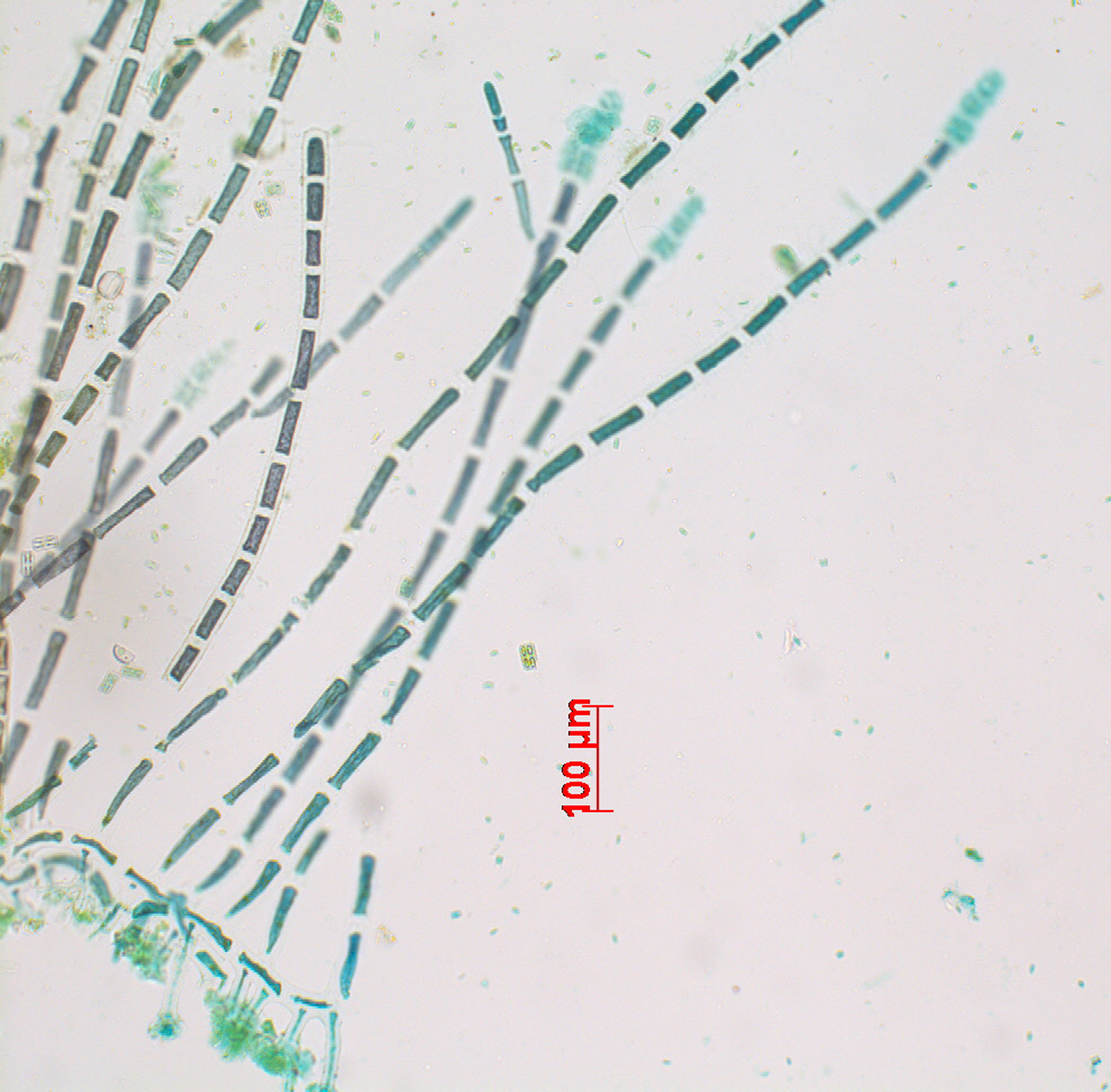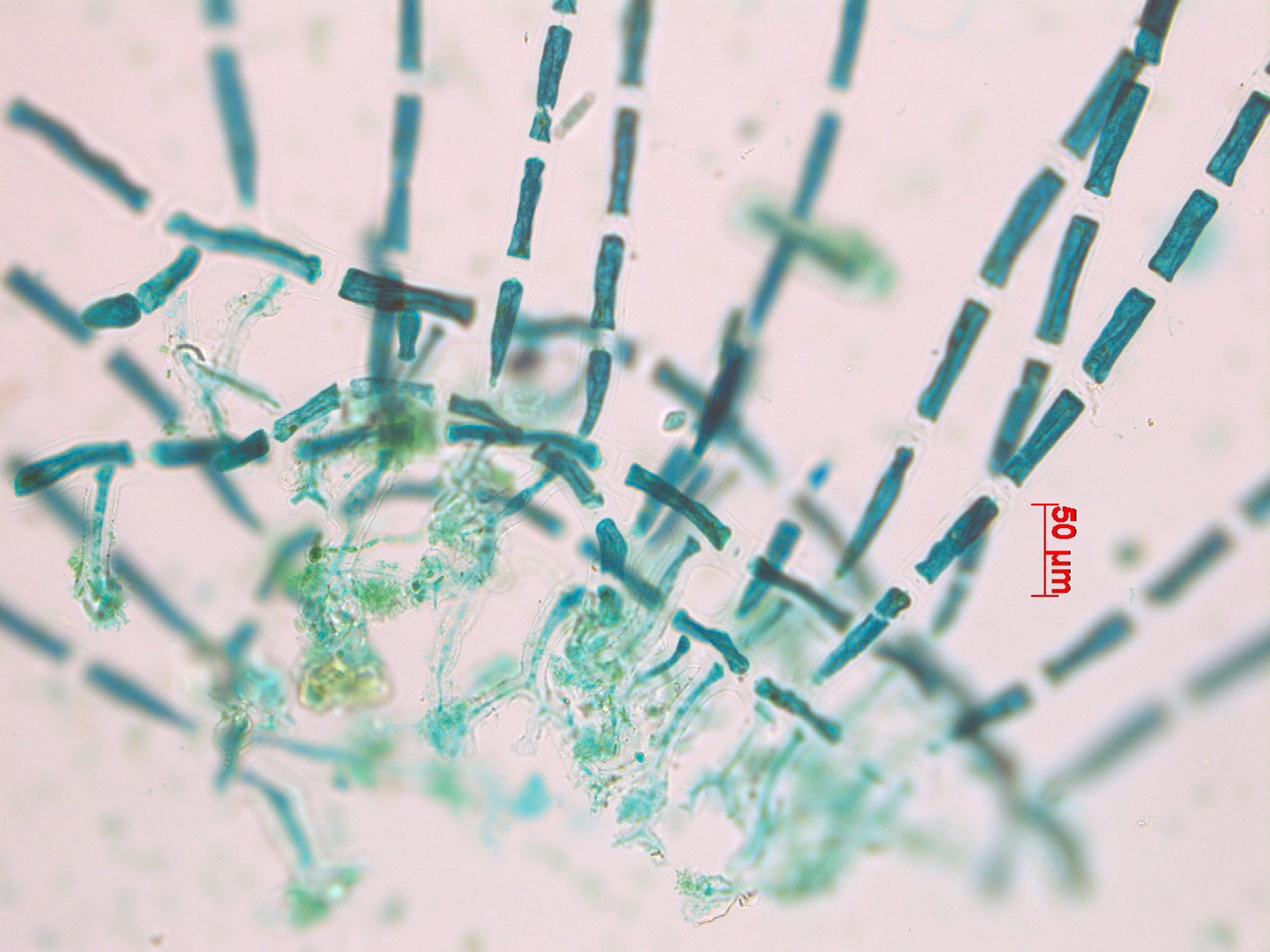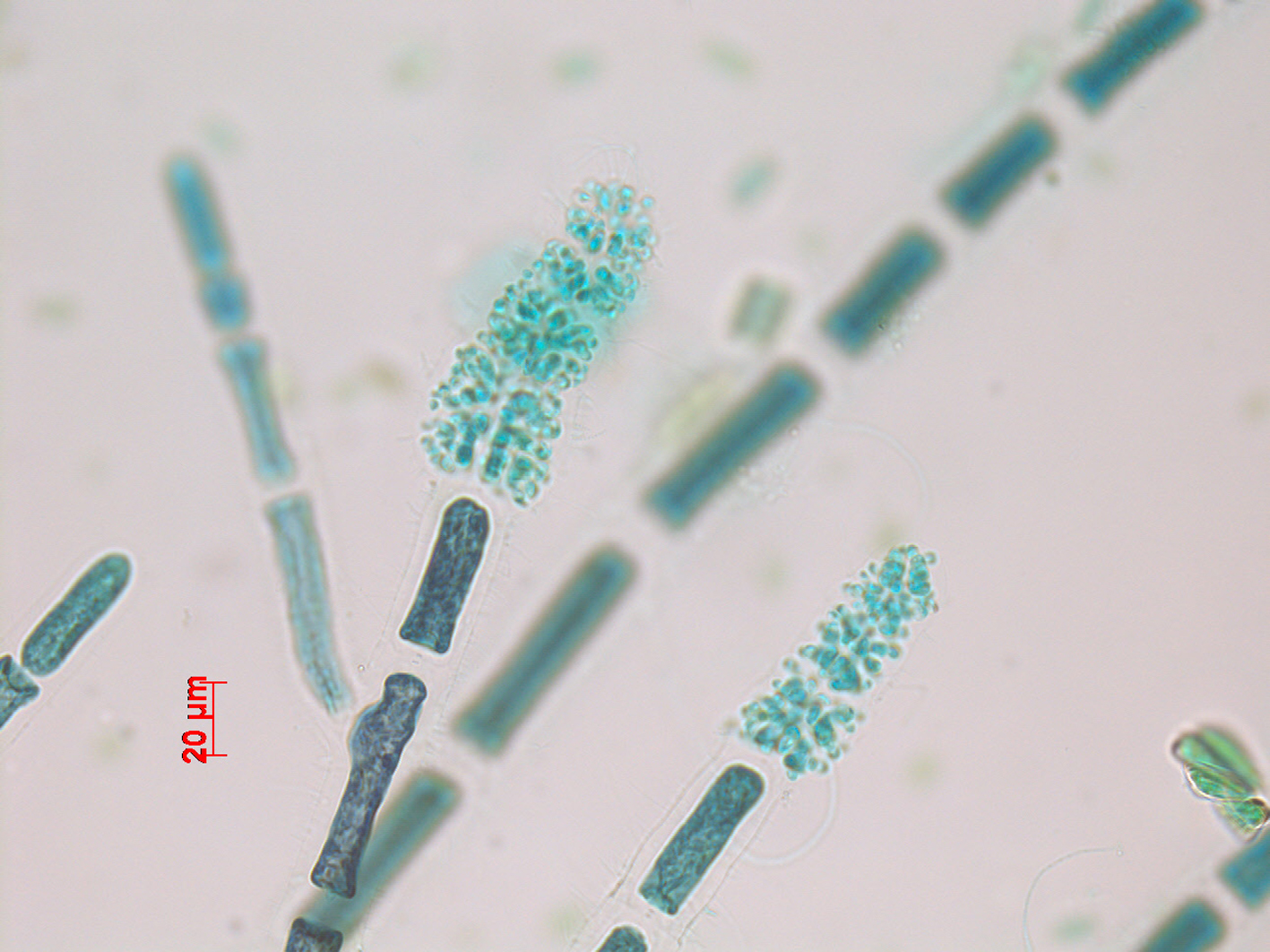Seaweeds of the South African South Coast


Order Ceramiales
Family Wrangeliaceae
Spermothamnieae indet.
Plants forming a dense velvety cover on the host, consisting of prostrate filaments and erect filaments ca. 2(-2.5) mm tall. Prostrate filaments attached by one or sometimes two unicellular digitate haptera per cell. Erect filaments and haptera arise in about the middle of the cells of the creeping filament. Erect filaments virtually unbranched, sometimes with a few laterals. Erect filaments straight, ca. 25 µm broad, the cells 3-4 times as long as broad. Male stands single at the top of the erect filaments, as a rule with a four-celled axis, measuring ca. 75 x 35 µm. Other reproductive structures not seen.
Generic affinity uncertain as only male reproductive structures were found. There seems to be a good overlap in cell dimensions and general morphology (especially the strictly terminal placement of reproductive structures on virtually unbranched erect axes) with Spermothamnieae indet. in Stegenga (1988).
Collections, ecology and regional distribution
Collected at Morgan Bay, on an Ecklonia radiata stipe, but if the same as Spermothamniae indet. (Stegenga 1988), then also from Port Alfred (on Pyura) indicating a range of at least 39-43).
Note: For further details of the Port Alfred material and its possible taxonomy, see Stegenga (1988). The tribe Spermothamniae is currently placed within the family Wrangeliaceae.

Spermothamnieae indet. Erect filaments with terminal male structures. Stained slide material, Morgan Bay.

Spermothamnieae indet. Erect filaments, prostrate filaments and attachment structures. Stained slide material, Morgan Bay.

Spermothamnieae indet. Terminal male structures. Stained slide material, Morgan Bay.
References Spermothamniae indet.
Stegenga H. 1988. Notes on Ceramiaceae (Rhodophyta) from the eastern Cape Province, South Africa I. New records and remarks on morphology. Blumea 33: 371-393.
Cite this record as:
Anderson RJ, Stegenga H, Bolton JJ. 2016. Seaweeds of the South African South Coast.
World Wide Web electronic publication, University of Cape Town, http://southafrseaweeds.uct.ac.za; Accessed on 07 January 2026.